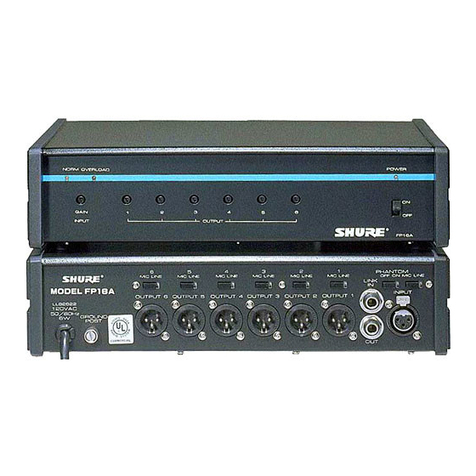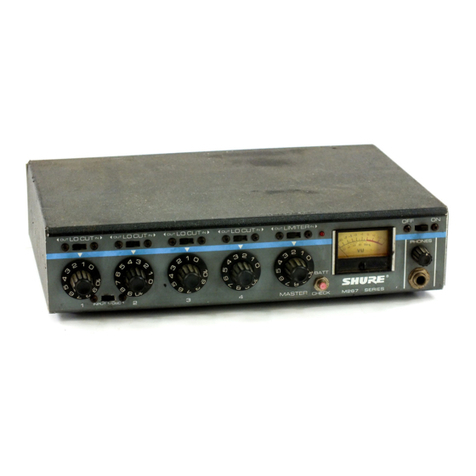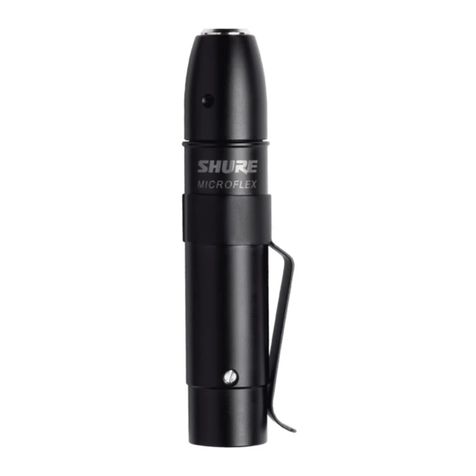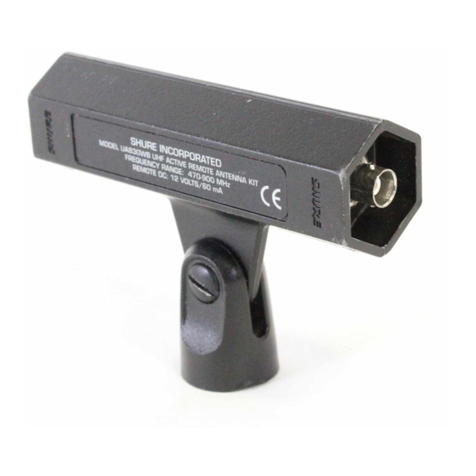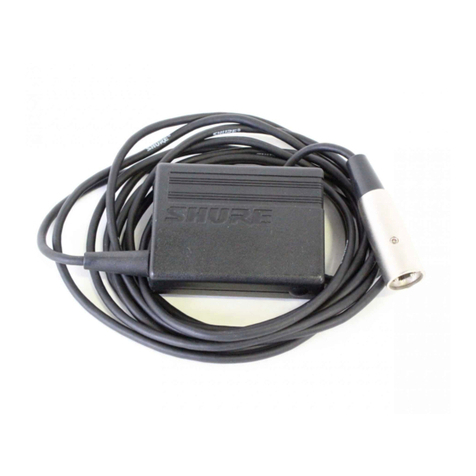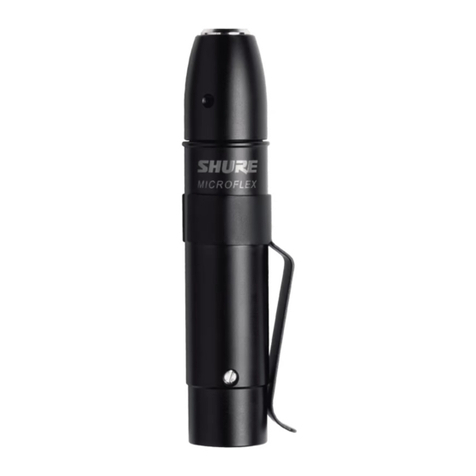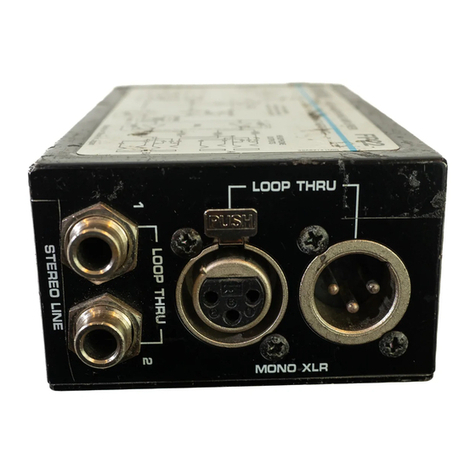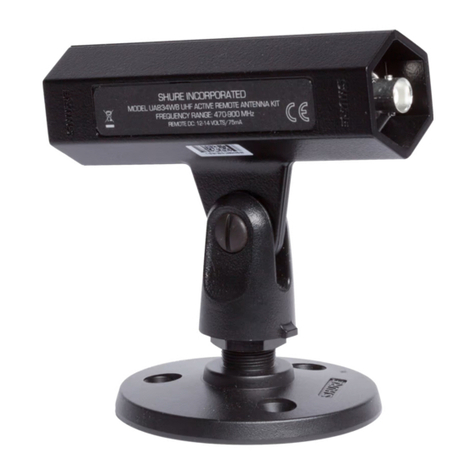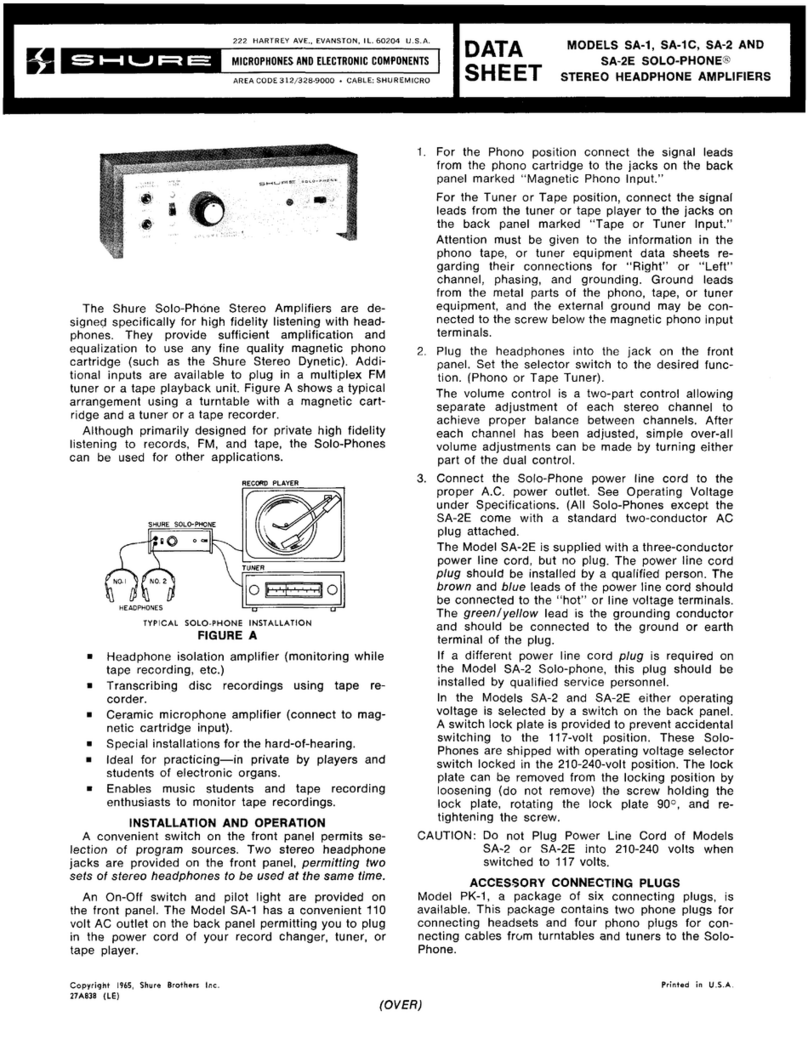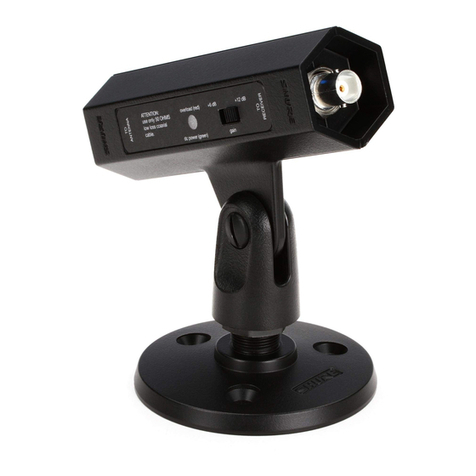
Shure Incorporated
6/8
•
•
•
•
•
•
•
Antenna Placement
Use the following guidelines when mounting antennas:
Antennas and receivers must be from the same band.
Mount antennas at least one wavelength (two feet) apart.
Position antennas so there is nothing obstructing a line of sight to the transmitter (including the audience).
Keep antennas away from metal objects.
Important: Always perform a "walk around" test to verify coverage before using a wireless system during a speech or performance. Experiment with antenna
placement to find the optimum location. If necessary, mark "trouble spots" and ask presenters or performers to avoid those areas.
Find More Information Online
For more information, visit http://www.shure.com
Setting Gain
The gain setting should only be used to compensate for the calculated cable signal loss. Additional signal gain does not mean
betterRFperformance.Toomuchgainactuallyreducesreceptionrangeandthenumberofavailablechannels.Thisisbe
cause Shure receivers are optimized to deliver the best performance when the sum of signal gain and cable loss equals 0 dB.
AdditionalgainjustamplifieseverythingintheRFrange—includinginterferenceandambientRFnoise.Itcannotselectivelyin
crease the signal from the transmitter.
Use the lowest gain setting necessary to achieve good reception of the transmitter RF signal, as indicated on the
receiver’sRFLEDormeter.
Only increase the gain setting to compensate for the calculated cable loss.
The resulting signal level at the receiver (cable loss plus amplification) should be within ±5 dB of the original signal level at
the antenna.
Calculating Gain Settings
To calculate the required gain setting, obtain the cable manufacturer's specification for signal loss. The rated loss usually varies
with RF frequency in addition to cable length.
Multiplytheper100feetratingofthecablebycablelengthtodeterminesignalloss,andaddgainasnecessarytocompen
sate. For example: a 50 ft. cable with rated loss of -12dB per 100 ft. would calculate as (-12dB/100)*50 = -6dB and require
+6dB of gain for a sum total of 0 dB loss.
